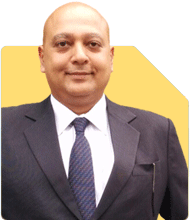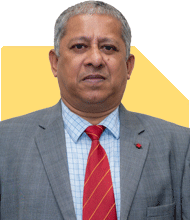
Hi,
I am a 36 year old female working in an IT company in India with in hand monthly salary of Rs. 70k. I am unmarried with no kids. I have approx. 34 lakhs in PPF, 14 lakhs in FD/RD, 2 lakhs in savings accounts, 7 lakh collected in PF (including Employee and employer contribution) along with own car. I don't have any existing loans. I want to plan for my retirement in the next 18-20 years by creating a portfolio of min. 5 crores by then. I have never invested in MF/SIPs earlier but want to start from Jul 2025 of 20k per month. l did some digging online and have come up with the below list of 5 MF SIP options along with 2 ETFs.
HDFC Balanced Advantage Fund 20 percent,
ICICI Prudential Blue Chip Fund 20 percent,
Motilal Oswal Mid Cap Fund 20 percent,
Parag Parikh Flexi Cap Fund 20 percent,
Bandhan Small Cap Fund 10 percent,
Sbi Nifty 50 ETF 5 percent,
Motilal Oswal Nasdaq 100 ETF 5 percent.
Please suggest if the above funds and distribution are suitable for me as a beginner with medium range risk appetite for long term wealth creation.
Also, should I move some of my savings Bank money to liquid MF SIPs for better returns. I have found the below 3 funds after some research online. Can you suggest if these are good?
Aditya Birla Sun Life Liquid Fund Direct Growth,
Edelweiss Liquid Fund Direct Growth,
Axis Liquid Fund Direct Growth.
I have my job provided health insurance of 5 lakh currently. Do I need any other separate health insurance along with this for the future. Also, should I take a term insurance since I don't have any dependents as it will be kind of no use to me personally.
Ans: I appreciate your clear goals and initiative in starting mutual fund investments. Let’s build a 360-degree plan to help you reach a Rs.5 crore retirement corpus in 18–20 years, using disciplined investing with professional guidance.
Personal Financial Snapshot
You are 36 years old and work in an IT company.
Monthly in-hand salary is Rs.70,000.
Unmarried, no dependents.
Investments you currently hold:
PPF: Rs.34 lakh
FD/RD: Rs.14 lakh
Savings account: Rs.2 lakh
EPF: Rs.7 lakh (combined employee and employer)
You own a car and have no existing debts.
You plan to start mutual fund SIPs from July 2025 with Rs.20,000 monthly.
You have selected 5 mutual funds and 2 ETFs.
You also have some liquid fund options in mind.
Employer provides health insurance of Rs.5 lakh.
You have medium risk appetite and desire Rs.5 crore in retirement assets.
You have a strong foundation in PPF and EPF. Your plan shows initiative and diversification. Let’s refine and strengthen it with professional insight.
Retirement Corpus Target and Timeframe
Goal: accumulate Rs.5 crore over 18–20 years by age ~54–56.
You have ~Rs.57 lakh locked in long-term accounts (PPF+EPF+FD).
To bridge the gap, disciplined investing in growth assets is essential.
SIP of Rs.20,000 monthly is a great start, but may need to increase as salary grows to meet the target.
Equity exposure must be central.
Balanced debt exposure will cushion volatility.
We will align investments to your medium risk appetite.
Review of Proposed Fund Mix
You have chosen five mutual funds and two ETFs. Let’s evaluate them:
HDFC Balanced Advantage Fund (20%)
ICICI Prudential Blue Chip Fund (20%)
Motilal Oswal Mid Cap Fund (20%)
Parag Parikh Flexi Cap Fund (20%)
Bandhan Small Cap Fund (10%)
SBI Nifty 50 ETF (5%)
Motilal Oswal Nasdaq 100 ETF (5%)
Actively Managed Funds vs Index Funds
You include two ETFs which are passively managed and simply track an index.
Index funds lack active oversight— they only mirror the benchmark and cannot react to market changes or sector risks.
Such funds may underperform in downturns since they cannot adjust portfolio to reduce exposure.
Actively managed funds give professional managers flexibility to buy undervalued stocks or exit vulnerable ones.
They are better suited for long-term wealth creation in volatile markets.
Critique of Fund Mix
You have two large-cap funds — good for stability.
Mid-cap and small-cap allocations provide growth potential but carry higher volatility.
Flexi-cap fund offers dynamic allocation across market caps.
Combined equity allocation is strong at 90% which aligns with your long-term growth goal.
The 10% in passive ETFs reduces agility and flexibility due to lack of active management.
As a beginner, handling multiple active funds can be complex without professional support.
Without CFP guidance, direct plan risks include emotional shifts, overtrading, and poor rebalancing decisions.
Recommendation on Mutual Funds and ETFs
Preferred Strategy
Begin SIP in actively managed mutual funds only.
Avoid index ETF exposure of 10%, as you lose active management advantage.
Focus on 3–4 well-researched, high-quality active funds across large-, mid-, and flexi-cap categories.
Large-cap and flexi-cap active funds should form the core (~60–70%).
Mid-cap (~15–20%) offers growth potential.
Small-cap exposure can be moderate (5–10%), considering your medium risk profile.
Maintain balance and avoid overcomplicating the portfolio.
Role of Regular Funds via CFP
Choose regular plans via Mutual Fund Distributor with CFP credential.
Regular plans include CFP support for rebalancing and behavioural guidance.
They help you stay invested through market cycles.
Avoid direct plans as they lack ongoing expert support.
CFP will help you review performance and make timely allocation changes.
Suggested Revised Fund Allocation
This is an example portfolio aligned with your goal, risk profile, and desire to start with Rs.20,000/month:
Large-cap active fund: 35%
Flexi-cap active fund: 25%
Mid-cap active fund: 20%
Small-cap active fund: 10%
Debt/ELSS or balanced fund: 10%*
* Debt or balanced fund is important for diversification and risk management.
Liquid Fund Suggestions
You considered three liquid funds: Aditya Birla Sun Life Liquid Fund, Edelweiss Liquid Fund, and Axis Liquid Fund (direct growth).
Liquid funds are low-risk and offer better returns than savings accounts.
Since these are direct funds and you have limited mutual fund knowledge, CFP advice is important.
Regular plans for liquid funds offer oversight and ensure alignment with emergency fund strategy.
You can park an emergency fund equivalent to 6 months’ expenses in a liquid fund via regular plan.
Emergency Fund Setup
You currently have Rs.14 lakh in FD/RD.
Convert Rs.6–8 lakh into liquid mutual fund for emergency buffer.
Keep this fund accessible and do not treat it as investment for goals.
The rest of FD can be reallocated over time into debt and equity instruments systematically.
Insurance Coverage Planning
Health Insurance
Your employer provides a Rs.5 lakh health cover.
This may not be sufficient for emergencies or future inflation.
Consider adding a personal health top-up plan of at least Rs.10–15 lakh.
Include senior citizens — your parents — in a family floater or separate plan.
This protects your corpus from medical emergencies going forward.
Term Insurance
Though you have no dependents, term insurance can still be beneficial.
It can cover your own income liability or future commitments such as a home loan.
As mortgage and lifestyle grow, term cover ensures financial stability.
Discuss this with CFP to assess appropriate coverage level.
Debt and Alternative Instruments
With no loans now, you are in a strong position.
Beyond equity, consider investing a part of your savings in PPF, debt mutual funds, or corporate bonds.
This gives moderate returns with capital protection.
Allocate based on time horizon — debt for short-term goals and equity for long run.
As retirement nears, slowly shift some equity to debt for stability.
Tax Considerations in Mutual Funds
Equity funds: Long-Term Capital Gains (LTCG) above Rs.1.25 lakh taxed at 12.5%.
Short-Term Capital Gains (STCG) taxed at 20%.
Debt funds: taxed as per your income slab rate.
Use PPF for tax deduction under section 80C.
Plan redemptions to stay within LTCG exemption limit.
Regular CFP review will help manage tax efficiently.
Behavioural and Review Framework
Annual portfolio review is key to objective decisions.
CFP will guide you through portfolio rebalancing based on performance drift.
Avoid impulsive fund switching because of market noise.
With CFP advice, stay consistent with the long-term plan.
Increase SIP contribution as your salary grows, and review asset mix regularly.
Lifestyle and Financial Discipline
As an IT professional with good salary, rising income is likely.
Review goals yearly and raise SIPs accordingly.
Avoid lifestyle inflation—save first, spend later.
A disciplined plan will compound and grow your wealth substantially.
Path to Rs.5 Crore Corpus
Your existing PPF, EPF, FD amount will form a base corpus.
Equity SIPs driven by active funds and regular reviews will grow exponentially.
Debt and liquid components will cushion volatility.
With systematic monthly SIP, and incremental rises, hitting Rs.5 crore is realistic.
A long investment horizon allows compounding to work powerfully in your favour.
360?Degree Summary of Action Steps
Transfer Rs.6–8 lakh from current FD to liquid fund as emergency buffer.
Start Rs.20,000 monthly SIP via regular active mutual funds.
Adjust allocation: large-cap, flexi-cap, mid-cap, small-cap, debt
Avoid ETF and direct funds to maintain active fund benefits.
Buy personal health top-up insurance and parent cover.
Consider term insurance for liability cover even without dependents.
Rebalance annually with Certified Financial Planner review.
Increase SIP with income growth and stay focused till corpus goal.
Financial Milestones Over Time
Jul–Dec 2025
Build emergency fund.
Begin SIPs.
Allocate existing surplus.
2026–2028
Continue active SIP, review twice yearly.
Increase SIP amount with salary rise.
2028–2032
Portfolio grows strongly.
Mix remains active equity heavy.
Begin drinks of rebalancing with CFP.
2032–2038
Mid-cap and small-cap mature.
Debt allocation rises gradually.
Corpus reaches significant milestones.
2038–2045
Just before retirement age, slowly move to more debt.
Aim to reach Rs.5 crore by 2045–46.
Final Insights
You are in a strong place now. With Rs.34 lakh already in PPF and a disciplined SIP strategy, your goal of Rs.5 crore is achievable. Active mutual funds managed with CFP help can significantly outpace index-only options. Distributing across carefully selected categories protects against volatility and boosts growth. A robust emergency fund and adequate insurance will safeguard your path. Annual reviews and periodic investment increases will sharpen your plan. With consistent effort and CFP guidance, you can grow your wealth steadily and retire with financial strength.
Best Regards,
K. Ramalingam, MBA, CFP,
Chief Financial Planner,
www.holisticinvestment.in
https://www.youtube.com/@HolisticInvestment

















